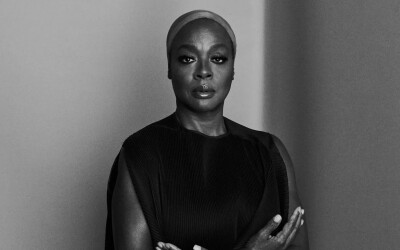Paris, via Zoom. Liya Kebede is sitting at a desk in a room where, behind her a wall of dark wood shelves displays a few framed photographs, papers, books. She refers to this room as “just an office that I use.” As for so many of us, I interpret her answer as an effect of this year, the prolonged temporariness of working and living and living and working from home. Any surface has become the desk. Still, even on Zoom, Kebede is very much a model at home—the veneer of commonality suspended by her crisp white shirt. A button-down with a laissez-faire collar, loose exactly where it ought to be. It’s the sort of shirt one buys hoping it will look the way it looks on Kebede but never does. In this era of influencer models, it seems strange to even use the words “off-duty model,” but Kebede exemplifies that expression with her white shirt; how specific and from another time anything starched seems now.
How are you? I ask. Kebede laughs. “What kind of question is that? It’s been an insane year. We’re all just trying to adjust. It’s very uncertain.” She pauses to add that as a model, uncertainty, to a lesser extent, is standard. “The whole fashion business is like that. You’re in this uncertain bubble. You get used to [it] because you don’t know when the next job is going to come, where it’s going to come from, when it is. You’re kind of just hanging around, and then someone calls.”
Hers is a career and lastingness, the familiarity of a Face. To Liya Kebede, we attribute key “moments,” like the sleek plunging provocativeness of Tom Ford’s Gucci or Nicolas Ghesquière’s Balenciaga revival, or Gap’s boyfriend trousers, or more recently, a collaboration with Pierpaolo Piccioli on a collection of candy-colored operatic puffers for Moncler. It’s perhaps why some editors have characterized Kebede’s career as evergreen, attaching personal nostalgias of the business to her likeness. The girl who Vogue Paris devoted an entire issue to nearly 20 years ago. And soon after, in 2003, a contract with Estée Lauder—Kebede was then the only Black woman to serve as their representative in the company’s 57-year history. More work followed. The synthetic frills of Victoria’s Secret pageantry. The beautiful backstage chaos of an early Marc Jacobs show. The world, long before “likes,” when influence wasn’t a matter of documentation necessarily, and when the runways and magazines were plainly so white.



